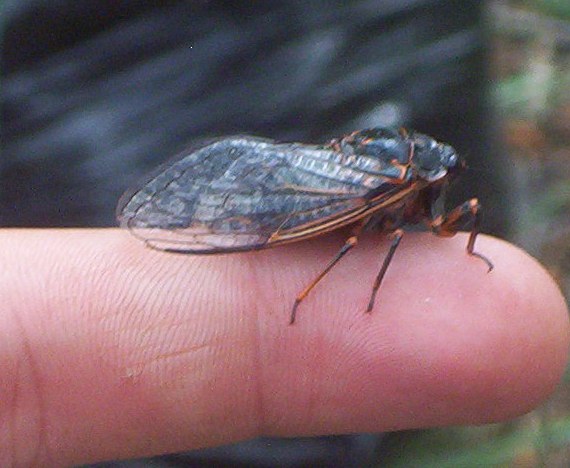

Malinoski, University of Maryland Extension ManagementĬontrol is not necessary on established mature trees. The activity may be unsightly but does not permanently harm the turf.Ĭicada emergence holes. These mounds may be 2-3 inches high and 1-2 inches wide with a hole approximately 1/2 inch wide in the center. Several weeks before emergence, some nymphs construct mud chimneys over the emergence hole. When large numbers of nymphs emerge from the soil, exit holes may be noticeable in a lawn. Photo: Jim Occi, BugPics, įlagging damage on maple tree. Tree branches damaged by cicada egg laying. Some common trees that are most susceptible to cicada damage include oaks (Quercus), maples (Acer), cherry (Prunus), and other fruit trees, hawthorn ( Crataegus), and redbud (Cercis). Evergreens are rarely used for egg laying. These plants may be protected by covering them with netting or a breathable fabric (see Management below).Ĭicadas have been known to lay eggs on over 200 types of trees to some extent. Young or newly planted trees may be killed, or their growth stunted if this type of injury is extensive during brood years. Twigs with many slits often break or hang down from the tree, a condition known as flagging. This damage is not serious. The trees will easily replace branches that have been broken or “pruned” by cicadas. Photo: Jim Baker, North Carolina State University, Photo: Pennsylvania Department of Conservation and Natural Resources - Forestry, Įgg laying damage to a tree twig. Periodical cicada female laying eggs into stem. If they feed at all, it is by sucking plant fluid from tender young twigs.Ĭicadas pose no health threat to people or pets, although consumption of large numbers by pets should be discouraged. The ovipositor cannot harm people. Adults do not feed on leaves. The only damage cicadas cause to plants results from the egg laying habits. Female cicadas use an appendage, called an ovipositor, to gouge longitudinal slits in twigs into which they then deposit eggs. Photo: Joseph OBrien, USDA Forest Service, Ĭicada nymph: Photo: Paula Shrewsbury, Ph.D., University of MarylandĪnnual or dog-day cicada adult. The empty skins are left clinging to objects.Įmerging cicada.
CICADA SEASON SKIN
They crawl onto tree trunks, posts, and other upright structures and after a short period molt or shed their skin to become winged adults. During the spring mature cicada nymphs will tunnel to the soil surface and emerge.It is not uncommon to have a few periodical cicadas emerge a year ahead or behind the rest of the Brood. Brood II emerged in 2013 and will emerge again in 2030. Broods II, V, X, XIV, and XIX are found in Maryland. They will emerge in large numbers known as broods. For the periodical cicada, this will take 17 years.They undergo four molts (growth spurts) while underground. Nymphs resemble wingless adults, are tan - brown with stout bodies, and have strong front legs that are specialized for digging and tunneling in the soil. The young or nymphs drop to the ground where they burrow into the soil and feed on the sap of tree roots.A week after they emerge, the adult cicadas will mate and the females deposit eggs in groups on twigs near the end of branches of more than 200 kinds of trees.Their wings will have a black ‘W’ marking on the front wings. Adult periodical cicadas are slightly smaller, with black bodies, reddish-brown eyes, and orange wing veins.Adult dog-day cicadas are about one and one-half to two inches long with brown or green, black and white body markings.All have prominent bulging eyes and semi-transparent wings held roof-like over their large bodies. Adults vary in size and color according to species.This is accomplished by vibrating membranes located on the sides of the insect beneath the wings. Males will start their droning mating song to attract females. After molting into adults, individuals move or fly to nearby vertical structures, especially shrubs and trees. Cicada nymphs (immatures) live underground and emerge from the soil at the end of April to the beginning of May.Periodical cicadas (also known as "17-year locusts," even though they are not locusts) emerge every 17 years based on the timing of different broods. Brood X will emerge in spring 2021 and is comprised of three species- Magicicada septendecim, Magicicada cassini, and Magicicada septendecula.

The dog-day or annual cicada, Neotibicen canicularis, occurs every summer.There are two types of cicadas commonly found in the eastern United States:.

They have sucking mouthparts which they use to feed on the xylem (water transporting tissue) of trees. Cicadas are large charismatic insects in the order Hemiptera.


 0 kommentar(er)
0 kommentar(er)
